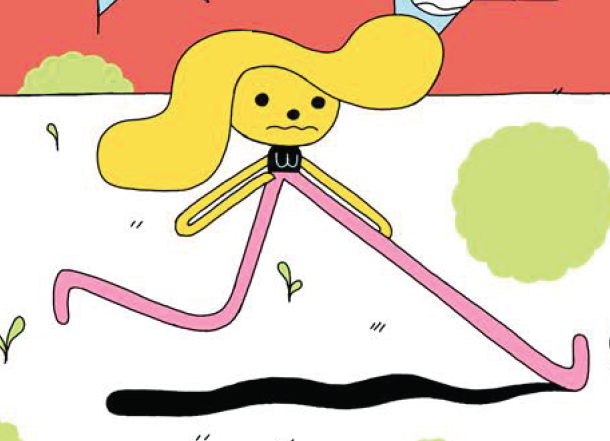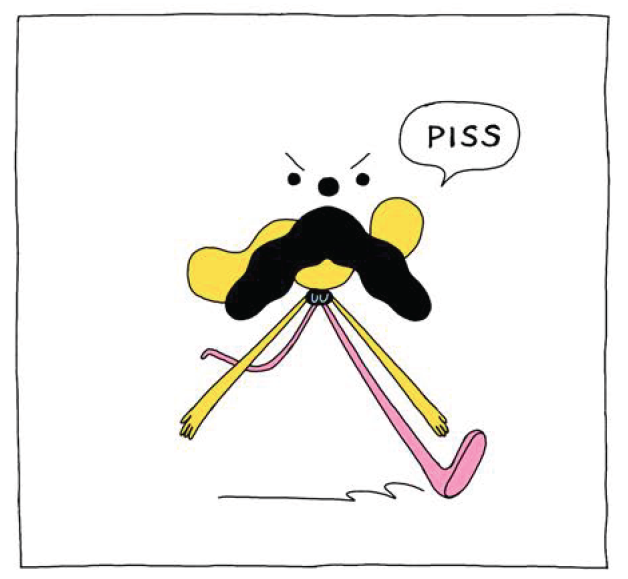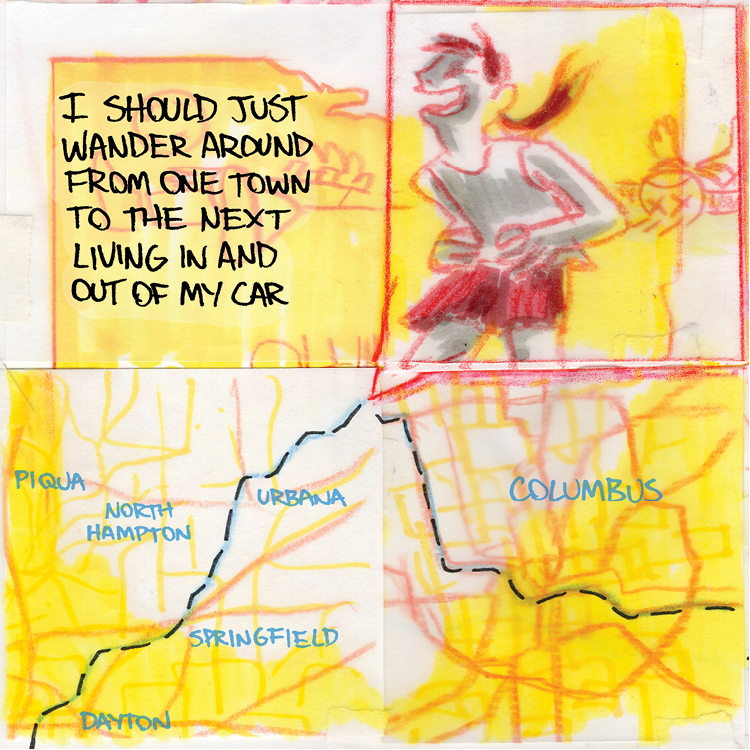Caleb Orecchio here with more thoughts on Michael DeForge’s new book from Koyama Press, Brat.
—————————————————————————————————


Earlier this week, I wrote about Michael DeForge’s “pace” as an author as well as within his comics, specifically his new book Brat, by use of the grid. Today I want to point out his use of symbolic imagery and repetition.
Every character is a symbol. Brat’s “protagonist,” Ms. D is the character in the two non-sequential images above. The tippy top image is her most basic character model while the image beneath is a distorted version of this, an exaggeration. The exaggeration calls attention to itself by being “off-model” and communicates a more extreme than usual emotion. Ms. D is very angry and DeForge communicates this in a simplistic way as you can see.
Below is another example of distortion where D’s face gradually distorts from panel to panel to communicate restrained frustration while talking to her mother. The distortion is not over-exaggerated right away in the immediate page below, but our memory of D’s uncomplicated model is ingrained in our head so we can’t help but notice a change. It’s kind of a subtle-not-subtle approach to emotion that the reader picks up on immediately as a visual cue due to the simplicity of the character model (and the dialogue).


As DeForge moves us through space, we see cars, building, trees, etc. All these elements are rendered in their simplest symbolic form. They draw little attention to themselves while still communicating a sense of place and a sense of visual pleasure. They serve their purpose without taking over.

Repetition is also key to DeForge’s storytelling. Repetition of the grid, repetition of character models, repetition repetition. This patterin-ing of information creates a nice beat as all grids do, but the pattern of symbol-based images adds to the smooth rhythm of the book. Maybe “adds” is not the right term. The rhythm sustained by repetition minimizes the effort the reader has to extend. It’s “easy” to read. And when you add the fact that every object is recognized immediately, the reading is immensely pleasurable. After a while you are not aware you are reading. You just are.
That’s what I’m getting at, Brat (and all of DeForge’s work) is pleasurable to look at and read. The combination of sparse symbolic information, the grid and the repetition of these elements is a combination that gets to the heart of comics. It’s a pattern that creates a rhythm that the reader can get lost in.
From what I can tell, DeForge just keeps jogging along in no rush to reach some transcendental finish-line of the mind that others may expect or have expected in the past. He steadily continues to run at his own pace thank God.

—————————————————————————————————

Cement Mixer – 8-23-18 – by Caleb Orecchio